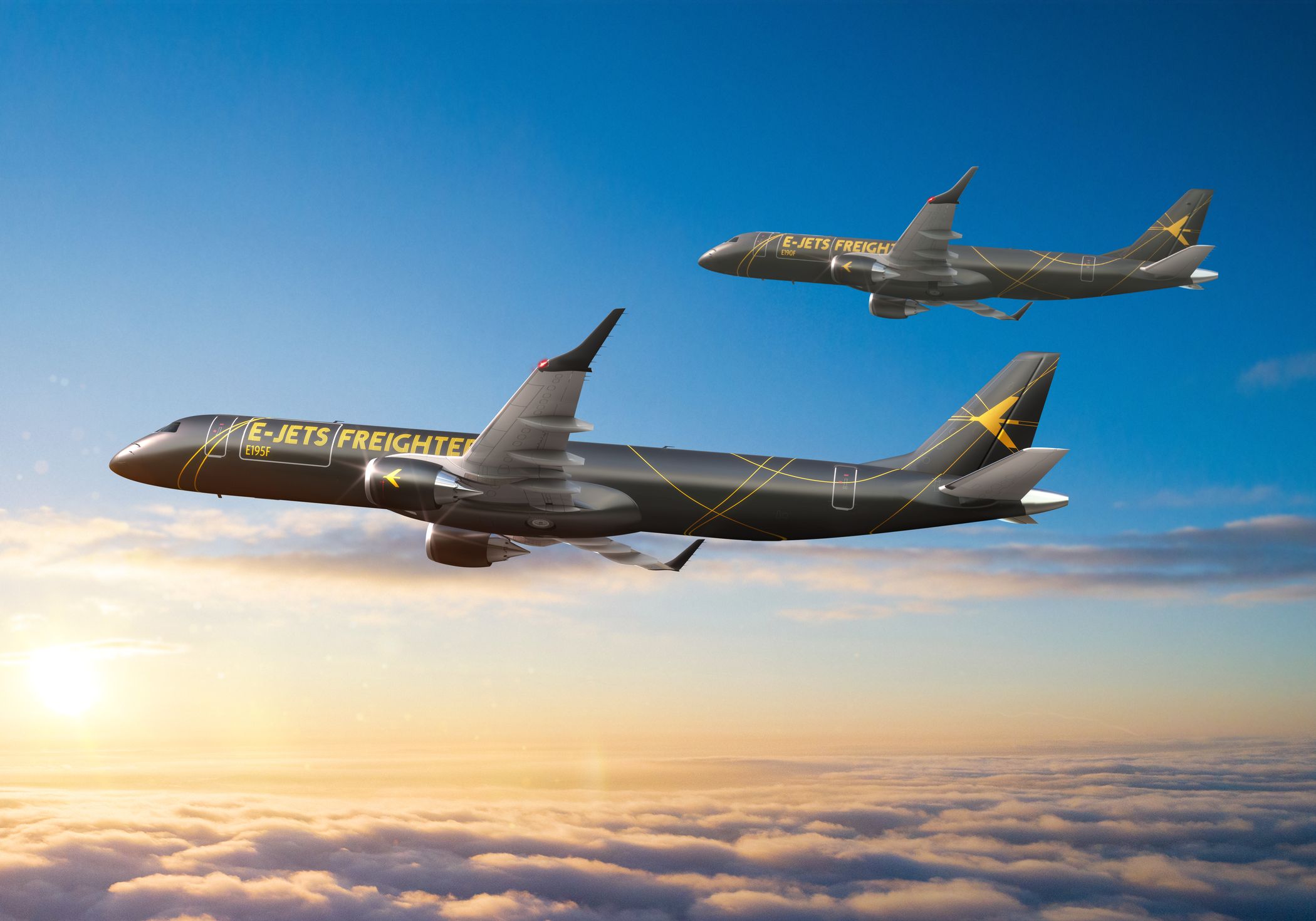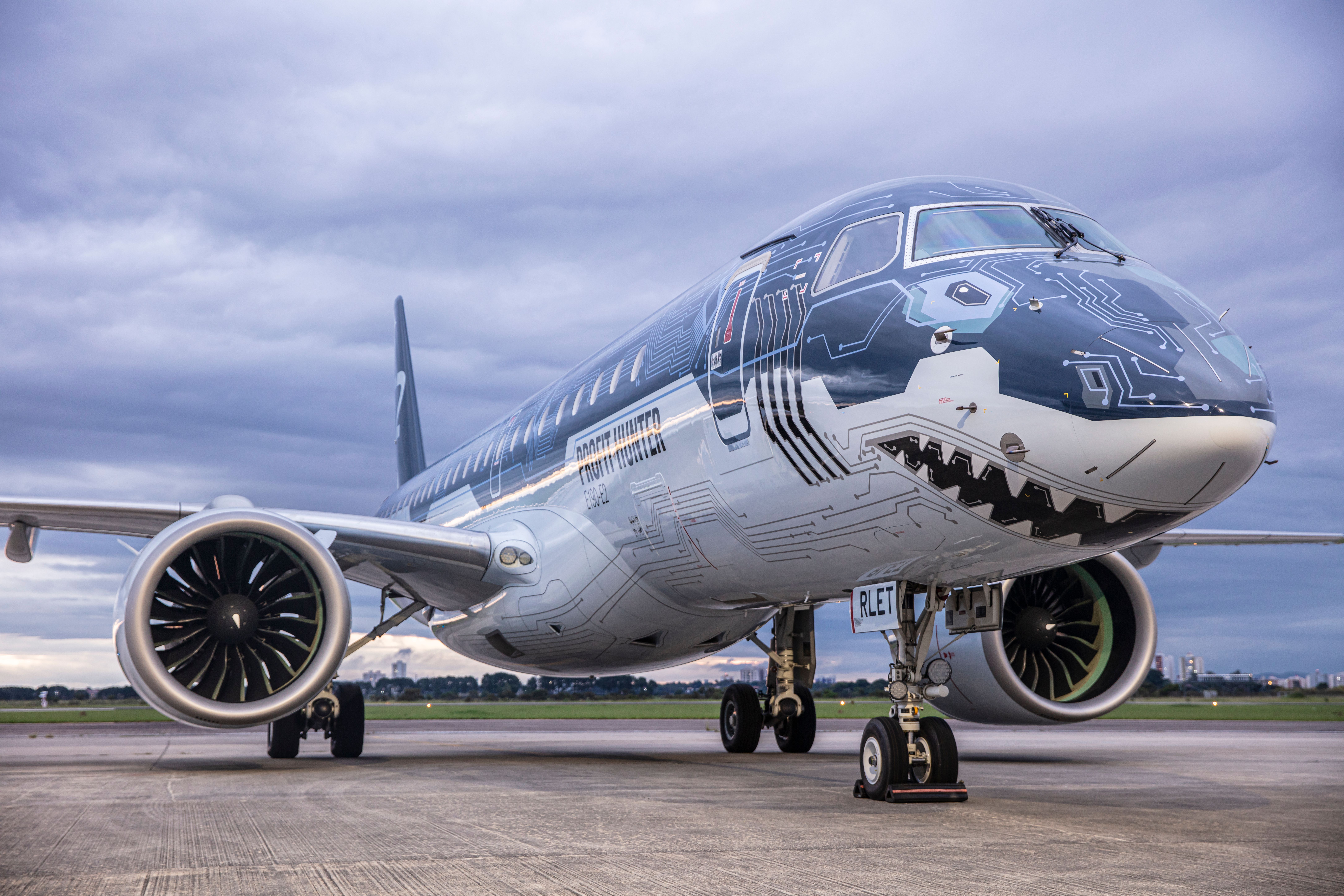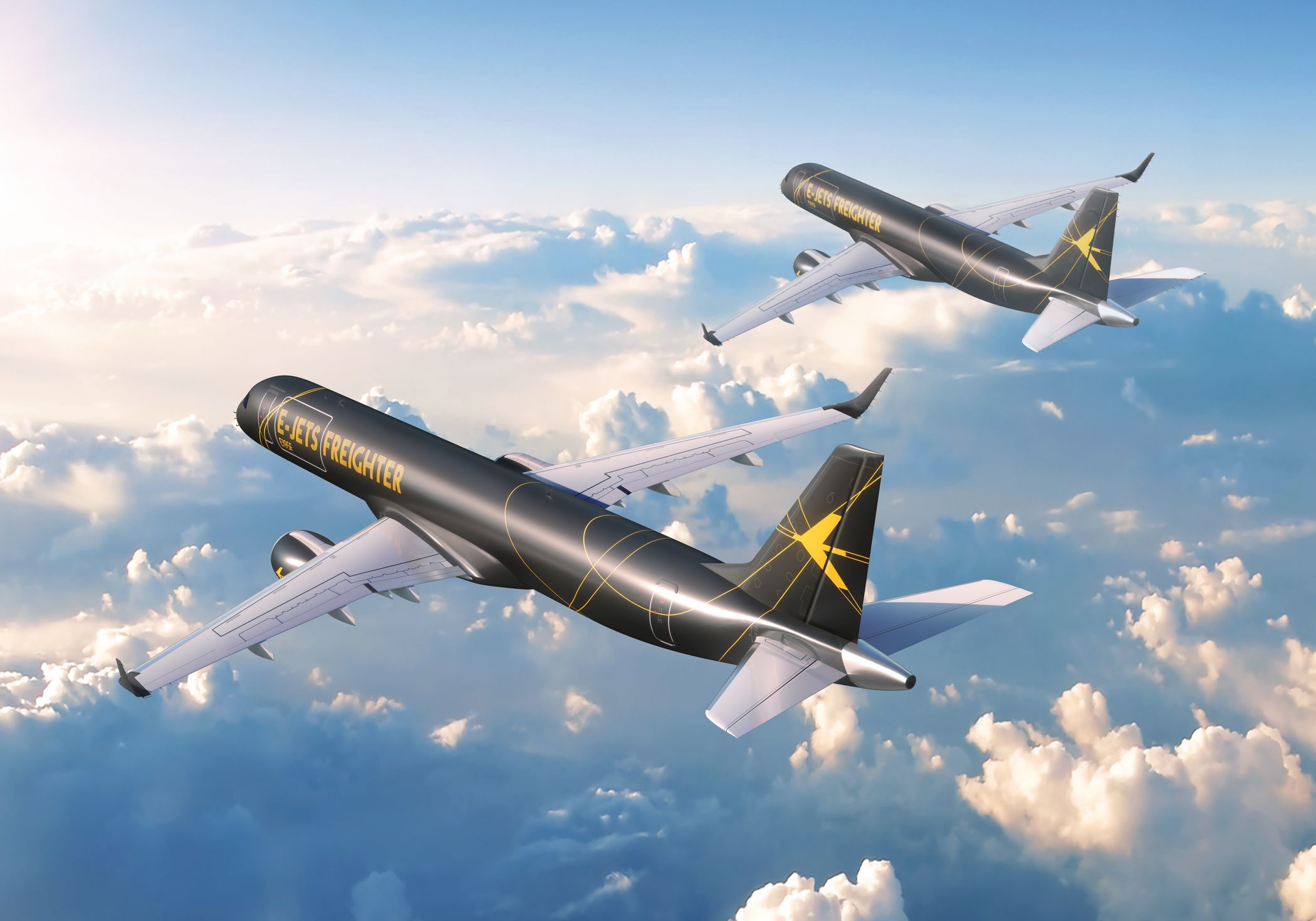Embraer has announced the signing of a firm order for up to ten Embraer E-Jets Passenger to Freight (P2F) conversions with an undisclosed customer. This is the first firm contract for Embraer’s P2F and comes after an agreement announced in May with Nordic Aviation Capital (NAC) for up to ten conversion slots for E190F/E195F. Let’s investigate further.
Embraer’s latest deal
On Friday, Embraer signed a firm order for up to ten E-jets P2F. Aircraft for conversion will come from the customer’s current E-Jets fleet, with deliveries starting in 2024.
This is the first firm contract for Embraer’s P2F, being the second agreement for this kind of operation. In May, Embraer and Nordic Aviation Capital announced a deal in principle to take up to 10 conversion slots for E190F/E195F.
Earlier this year, Embraer announced its intention to enter the growing cargo market with two new passenger-to-freight conversions. The Brazilian company is looking to offer a full freighter conversion of its models, the E190 and the E195, with expected entry into service in 2024.
In the past few months, we saw the other two major commercial aircraft builders, Airbus, and Boeing, confirming and adding orders to their own new freighter prospects (the A350F and the 777XF, as well as their conversions, such as the A330P2F, the A321P2F, and the B737BCF.
We have already seen an Embraer E190 freighter. Earlier this year, Azul and LHColus Technologia developed and introduced the first Embraer Class-F Freighter, a former passenger E190 turned into a cargo jetliner aimed to increase Azul’s cargo service across Brazil.
The benefits of the E-Jets P2F
Embraer’s E-Jets P2F conversions will have over 50% more volume capacity, three times the range of large cargo turboprops, and up to 30% lower operating costs than narrowbodies, said the company in a statement.
Moreover, there are over 1,600 E-Jets delivered by Embraer globally, meaning there’s a big market of jetliners apt to become freighters in the future.
Last December, Arjan Meijer, president and CEO of Embraer Commercial Aviation, said the E-Jets P2Fs are perfectly positioned to fill the gap in the freighter market between turboprops and larger narrowbody jets.
“Our P2F E-Jet conversion hits the market as the demand for airfreight continues to take off, and as e-commerce and trade, in general, undergoes a global structural transformation,” he added.
Discover more aviation news here.
The conversion
Embraer will do the conversions in-house in its facilities in Brazil.
The conversion to freighter will be performed at Embraer’s facilities in Brazil and includes main deck front cargo door; cargo handling system; floor reinforcement; Rigid Cargo Barrier (RCB) – 9G Barrier with access door; cargo smoke detection system (class E main deck cargo compartment), Air Management System changes (cooling, pressurization, etc.); interior removal and provisions for hazardous material transportation.
Combining under-floor bulk cargo and main deck, the maximum gross structural payload is 13,150kg for the E190F and 14,300kg for the E195F. Considering typical e-commerce cargo density, the net weights and volumes are also impressive: the E190F can handle a payload of 23,600lb (10,700kg) while the E195F a payload of 27,100 lb (12,300 kg).
Do you think the E190P2F and E195P2F will be successful models in the freighter market? Let us know in the comments below.



